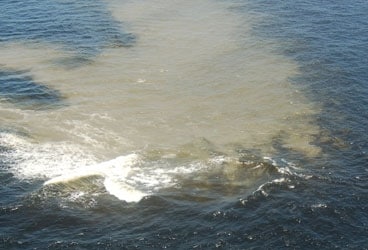
ASMudVolcano368
Mariners cruising around the eastern coast of Trinidad should be on the lookout for something mysterious lurking beneath the water. Trinidad and Tobago’s Office of Disaster Preparedness and Emergency Management has issued a safety warning since an underwater mud volcano was discovered about five miles northeast of Point Radix. The location is given as approximately 10 degrees 22 minutes north and 60 degrees 55 minutes west.
According to information from observers cited on the Geological Society of Trinidad and Tobago’s website, turbulent, white foamy water marks the mound, and a plume of discolored water extends in a east-northeast, to west-southwest direction.
The extrusion of mud over a period of several months has built up a 50-foot-high and 500-foot-long mound that’s now just below the water’s surface. Paul Saunders, chief executive officer of the Office of Disaster Preparedness and Emergency Management, said that initial reports of the mud volcano came from divers and fishermen in the area. He also said that although there have been no reports of accidents thus far, there is a genuine danger to any boats that approach the area. Sailors are advised to stay at least one mile from the disturbance, as the waves are big enough to capsize a small boat. Boats could also lose buoyancy because of natural gas bubbling up to the surface, or they could run aground in the mud.
The Seismic Research Unit of the University of the West Indies and the Geological Society of Trinidad and Tobago have since confirmed the new “island” is a mud volcano, which is a mixture of water, sediment, and pockets of natural gas that usually emerge along fault lines. This phenomenon is rather common on and around Trinidad, which is the world’s fifth largest exporter of natural gas. Temporary islands were also reported off the twin-island Caribbean nation in 1964 and 2001.
More information about the new mud volcano and previous ones in Trinidad and Tobago can be found at the Geological Society of Trinidad and Tobago’s website (www.gstt.org) and at the website of the Seismic Research Unit of the University of the West Indies (www.uwiseismic.com).








